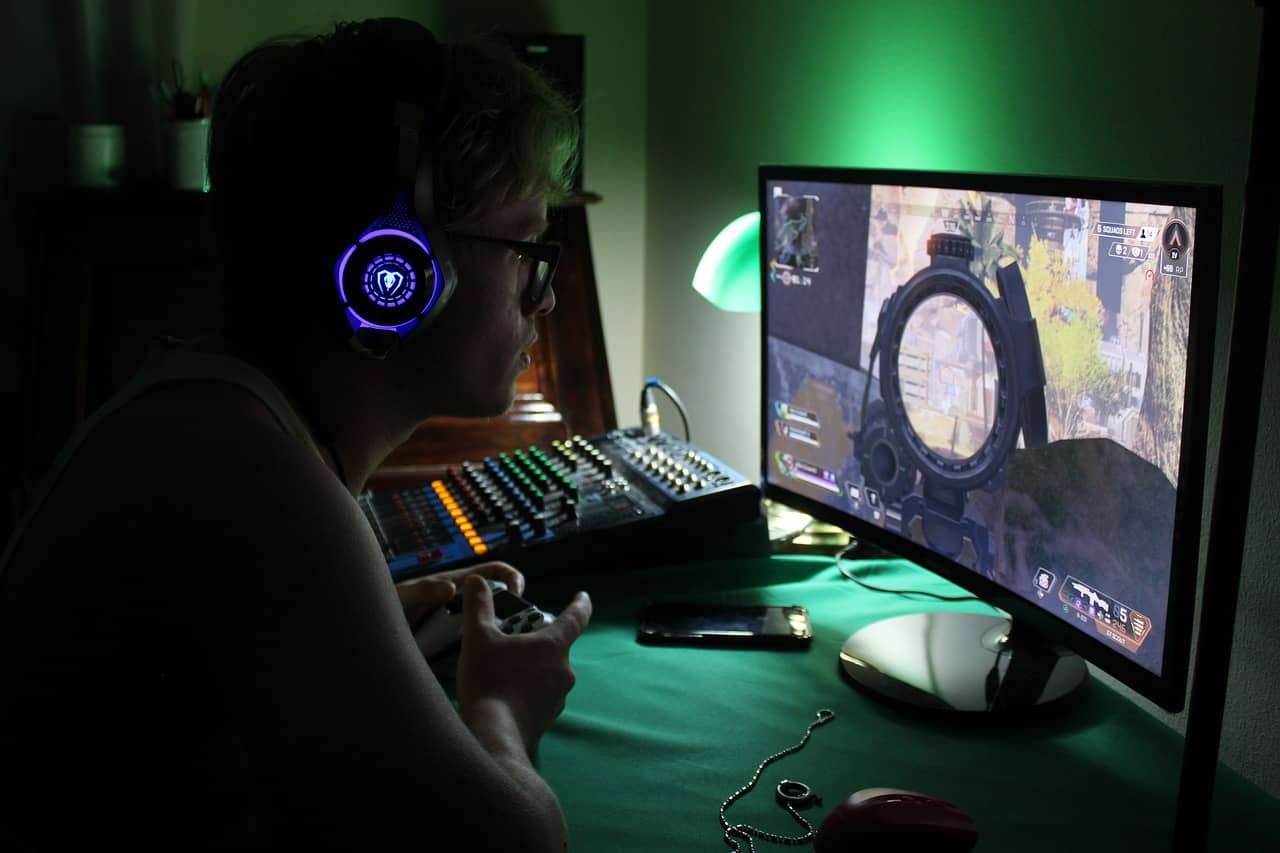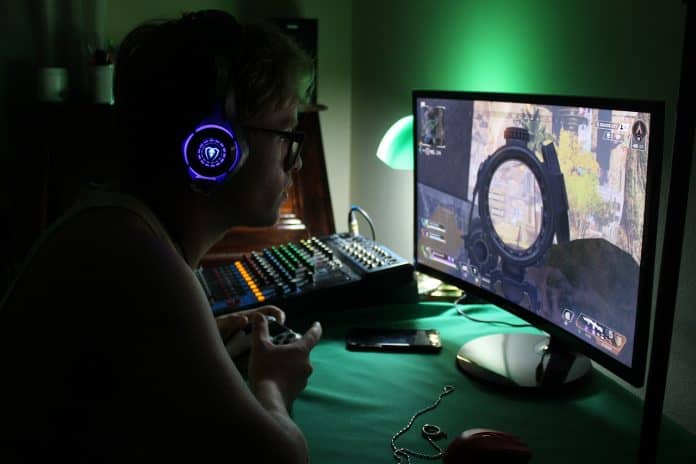If you experience game stuttering with a high fps, this can be a very irritating experience. Not only does it detract from the gaming experience but also it can be very disappointing if you’ve invested a lot of time and money in your PC to get the best build for gaming.
However, don’t worry, because stuttering or choppy gameplay on a PC is a pretty common issue that can luckily be solved with a few different solutions.
Usually, stuttering in games happens because of bottlenecking and variations in frame time. We’ll explain exactly what frame time is and provide three solutions to get rid of inconsistent frame times and fix stuttering in games for good.
Why Does Stuttering Happen?
Stuttering in games is an irritating albeit common experience especially if you are operating on a high frame rate. Why does this happen?
 First of all, the smoothness or choppiness of a game is determined less by frame rate and more by frame time. The frame time is the amount of time in-between frames. If you’re being shown frames at inconsistent intervals, this will lead to a choppy appearance.
First of all, the smoothness or choppiness of a game is determined less by frame rate and more by frame time. The frame time is the amount of time in-between frames. If you’re being shown frames at inconsistent intervals, this will lead to a choppy appearance.
Inconsistent frame time occurs specifically when you increase the frame rate while gaming. This is because by increasing the frame rate, you are putting a strain on your hardware.
For example, let’s consider the CPU. The CPU has a lot to do while gaming: networking, AI, game logic, and sending draw calls to your GPU for frames. Each frame to be rendered by your GPU was sent via instruction from the CPU first.
As frame rates increase, your CPU usage will tend to increase quite dramatically because of all the work it has to do sending draw calls to the GPU. The higher the frame rate, the more draw calls, and the more frequently they must occur.
The problem occurs when you reach a certain frame rate and cap your CPU at 100%. At this point, your CPU is unable to send steady draw calls, and rather only sends them whenever it is ready. This leads to choppiness and is ultimately what results in stutters while gaming.
This is referred to as a hardware bottleneck and can also occur the other way around. If you have a super-fast CPU that can send steady draw calls to the GPU, but the GPU is still busy rendering old frames, again you will see stuttering.
For this reason, it’s important to ensure that your GPU and CPU operate on a relatively similar level. This is so you can avoid bottlenecking, or one component being forced to wait for the other to finish its job to continue its work. Ultimately it is bottlenecking that leads to stuttering.
How to Fix Frame Time
Now that we know that bottlenecking and variation in frame time is what leads to stuttering, it might seem like you need to go out and purchase the highest quality and most perfectly compatible GPU and CPU.
Luckily, that’s not true! If your hardware is lacking, it might be time for an update. But if you’re already rocking powerful hardware, there’s absolutely no reason to change it. Instead, we’ll look at two easy solutions to stopping stuttering without changing your hardware.
1. Use RivaTuner Statistics Server to Limit Frame Rate
One method where users have found great success is using a third-party frame rate limiter. One third-party frame rate limited which is universally well-rated is the RivaTuner Statistics Server (RTSS).
Some games have built-in frame rate limiters, but generally, these may only provide a few preset frame rates to choose from. Additionally, sometimes these built-in limiters don’t ensure a stable frame time. While the frame rate might be stable, there still may be variations in the time between the frame – which is the feature that leads to choppiness.
That’s why we’re choosing to use RTSS, which will successfully not only limits frame rate but also can keep a consistent frame time. Limiting the frame rate to something sustainable for your PC should eliminate any stuttering and keeping the frame rate stable will get rid of any choppiness.
RTSS is free and easy to use. You can download the latest version of RTSS online on guru3d.com. When you are one the RivaTuner Statistics Server page on guru3d.com, scroll down to the bottom to find the second with the download links. Select the most recent version and simply wait until it downloads to your PC.
When it’s finished downloading, go to your downloads folder and find the download. Once you locate it, you’ll need to extract it by right-clicking on it and selecting “extract”. This should create a new folder containing the extracted .exe file. Select on the new folder and double click on the RTSS Setup .exe file.
Then it will start guiding you through the setup, select “Next” until you see the option to “Install”. Hit Install and once it has installed, you can go ahead and open up the program by searching “RivaTuner Statistics Server” in your start menu and selecting it.
RTSS will now launch. We are only dealing with the framerate limiter, which you will find on the right side of the program a little less than half-way down. This option will allow you to lock your framerate to any you desire.
You’ll want to set your frame rate limit to the highest number possible that also won’t cause stuttering. This will need a bit of tinkering to discover exactly what frame rate is perfect depending on your CPU, GPU, and your monitor. You may even find that some games can handle higher frame rates than others.
Once you type in your desired frame rate, it should apply automatically so when you open up your game, the frame rate will be applied.

2. Rename the GameBar Presence Writer
This is another option that has been used by users to eliminate stuttering on high-performing PCs. There is a program in Windows called GameBar Presence Writer which starts up each time you open up a game and has been identified as causing lagging and stuttering while gaming.
This program doesn’t have a necessary function and so we will explain how to rename the file so that Windows won’t be able to find it when it searches for it when you open a game.
First, to find the file go to your File Explorer and click on your Boot Drive. In your Boot Drive, click on “Windows” and then on “System32”. Then scroll down until you see a program called “GameBarPresenceWriter.exe”.
Right-click on “GameBarPresenceWriter.exe” and select “Properties”. Then click on the Security tab and select “Advanced”. On the top of the Advanced Securities page, you should see where it says “Owner” and to the right a “Change” button. Click on “Change”.
In the pop-up window in the blank text box in the bottom, write the name of your computer administrator. Once you’ve typed it in, click the “Check Names” button. If this works, then click “OK”.
Now back on the Advanced Settings window, you should see that the owner is now yourself. Click “Apply” to close the window.
Next, you will need to select “Advanced” again, the same Advanced Security page will pop up, but this time look for the “Add” button. Select this and in the window that pops up, hit “select a principal”, add your name into the text box, select “Check Name” and then “OK”.
Once you’ve done that, put a checkmark next to the option “Full Control” and click “OK”. Now in the Advanced Security window, you should see yourself in the list of “Permission entries”. Then click “Apply” and “OK”.
Then, click “Advanced” again and we will give ownership back to the TrustedInstaller. To do this, select “Change” again type “NT Service TrustedInstaller” into the text box, click “Check Names” and then “OK”.
Now in the principals, both you and the TrustedInstaller have full control. This will allow you to go back into the System32 file and rename the file from GameBarPresenceWriter to anything you like!
Now when programs will try to start the program up, they won’t be able to find it and it won’t run. As a final note, make sure to restart your computer after this before you try gaming.
3. Get New Hardware
As stated earlier, this option shouldn’t be your first choice, but it is important to check out what kind of CPU and GPU you’re using and assess whether they’re powerful enough for the games you like to play. If your CPU or GPU isn’t adequately powerful, you still may experience stuttering simply because they simply can’t keep up with such a high frame rate.
If you’re experiencing frequent stutters while at a high frame rate and you think you might be due for a CPU or GPU upgrade, then consider getting some more powerful hardware that can easily handle your preferred frame rate.
FAQ
What are the common causes of game stuttering even with high FPS?
Game stuttering despite high FPS can be caused by various factors. These include outdated graphics drivers, background applications using up system resources, issues with V-Sync or G-Sync settings, and hardware issues such as an overheating CPU or GPU. Sometimes, it may also be due to in-game settings or a mismatch between the game’s FPS and your monitor’s refresh rate.
How can I fix game stuttering caused by V-Sync settings?
If V-Sync is causing your game to stutter despite high FPS, try turning it off in the game’s settings. If the issue persists, try changing the setting within your GPU control panel. For Nvidia users, this can be found in the Nvidia Control Panel under ‘Manage 3D settings’. For AMD users, it is in the AMD Radeon Settings under ‘Display’.
What other solutions can help fix game stuttering with high FPS?
Other solutions can include updating your graphics drivers, closing unnecessary background applications, adjusting in-game settings, ensuring your PC is adequately cooled, and possibly upgrading your hardware. If the game itself is the issue, waiting for a patch or an update from the developers might be necessary.







